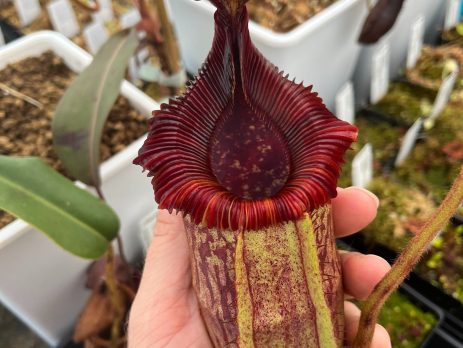What are some interesting facts about Nepenthes aka the tropical pitcher plant?
Nepenthes, commonly known as tropical pitcher plants or monkey cups, are a group of carnivorous plants known for their distinctive pitcher-shaped traps. Here are some interesting facts about Nepenthes:
- Global Distribution: Nepenthes are found in various tropical and subtropical regions, including Southeast Asia, Australia, Madagascar, and some parts of the Indian Ocean. They are especially diverse in Borneo, Sumatra, and the Philippines.
- Carnivorous Adaptations: Like other carnivorous plants, Nepenthes have evolved to capture and digest insects and other small prey. They use their modified leaves, which form pitcher-shaped traps, to lure, trap, and digest their prey.
- Diverse Species: There are over 100 known species of Nepenthes, and many hybrids have been created by enthusiasts and horticulturists. Each species can have unique characteristics, such as pitcher size, color, and shape.
- Pitcher Anatomy: Nepenthes pitchers have a lid, peristome (the slippery rim of the pitcher), and a fluid-filled cavity. The lid helps keep rainwater out and directs insects toward the slippery peristome, making it difficult for them to escape.
- Attractive Lures: The pitcher’s peristome is often colorful and may have nectar glands, attracting insects to the opening. Some species also produce sweet-smelling odors to further entice prey.
- Fluid Digestion: The fluid inside Nepenthes pitchers contains digestive enzymes that help break down and absorb nutrients from captured prey.
- Symbiotic Relationships: Some Nepenthes species form symbiotic relationships with ants. These ants live in the pitchers and may provide nutrients to the plant while benefiting from the prey captured.
- Size Variation: Nepenthes species and hybrids vary greatly in size, from small ground-hugging species to massive climbers with pitchers several feet in length.
- Conservation Concerns: Many Nepenthes species are threatened by habitat loss due to deforestation and illegal collection for the horticultural trade. Some are classified as endangered or critically endangered.
- Edible Fruits: While the pitcher traps are carnivorous, some Nepenthes species also produce edible fruits. In some regions, these fruits are consumed by humans and wildlife.
- Historical Uses: Indigenous people in regions where Nepenthes grow have sometimes used the pitchers as containers for food or water. They were nicknamed “monkey cups” because monkeys were observed drinking from them.
- Hybridization: Nepenthes are popular among plant enthusiasts, and many hybrid varieties have been created for cultivation. These hybrids often have unique and visually striking pitcher characteristics.
- Cultivation: Growing Nepenthes can be challenging but rewarding. They require specific conditions, including high humidity, bright indirect light, and well-draining acidic soil. Proper care is essential for their health and growth.
- Fossil Evidence: Fossilized Nepenthes pitchers dating back to the Eocene epoch (about 35 million years ago) have been discovered, suggesting that these plants have a long evolutionary history.
Nepenthes are remarkable plants with captivating adaptations for carnivory, making them a subject of fascination for botanists, horticulturists, and plant enthusiasts worldwide. Their striking appearance and unique biology continue to make them a popular choice for cultivation and study.



Leave a Reply
You must be logged in to post a comment.